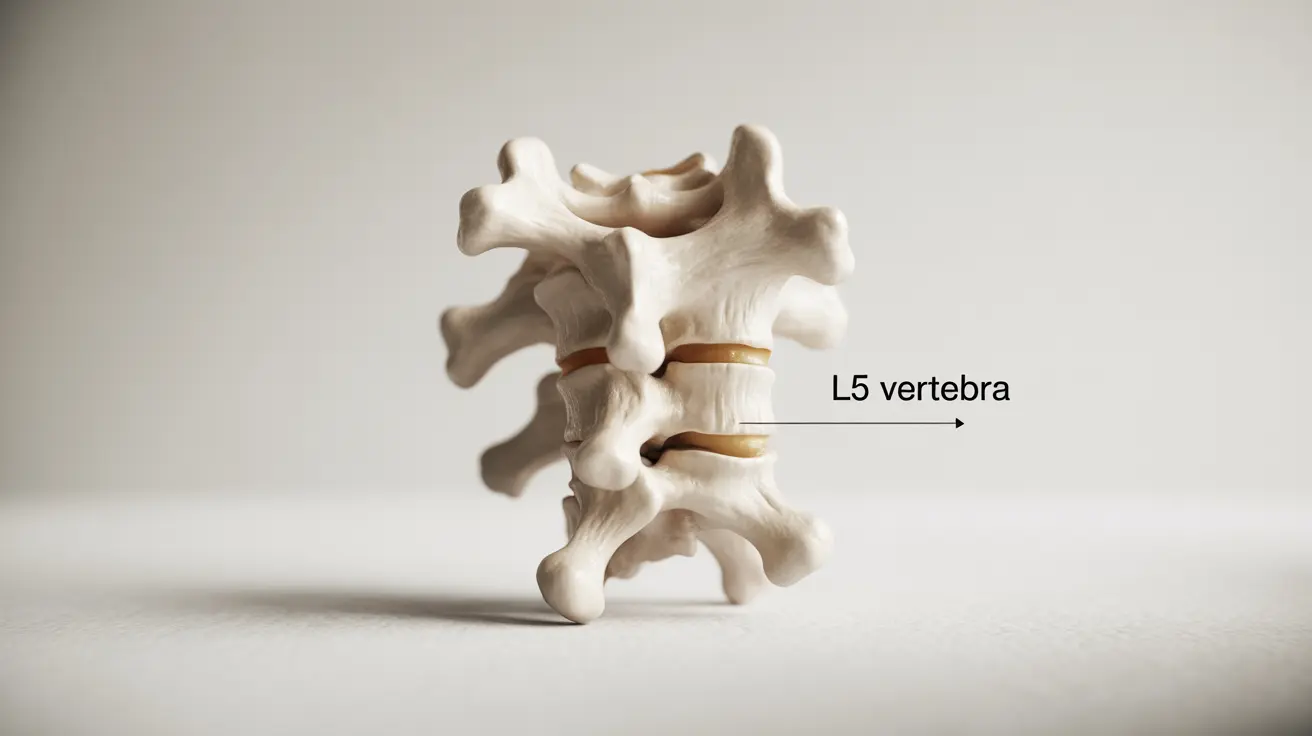The L5 vertebra plays a vital role in supporting your body's movement and stability as the final segment of your lumbar spine. Located at the base of your lower back, this crucial vertebra serves as a transition point between your spine and sacrum, making it essential for everyday activities like walking, bending, and lifting.
Understanding the L5 vertebra's function and common issues that can affect it is crucial for maintaining spine health and recognizing when medical attention may be needed. Let's explore this important spinal component in detail.
Anatomy and Location of the L5 Vertebra
The L5 vertebra is positioned at the lowest point of your lumbar spine, just above where the spine connects to your pelvis. It's the largest and most robust of all lumbar vertebrae, specifically designed to bear significant weight and facilitate movement.
Key anatomical features of the L5 vertebra include:
- A thick vertebral body for weight support
- Large transverse processes for muscle attachment
- Strong pedicles and laminae for structural stability
- Specialized facet joints for controlled movement
Function and Movement Capabilities
The L5 vertebra serves several crucial functions in your spinal column:
- Weight distribution of the upper body
- Facilitation of forward and backward bending
- Protection of spinal nerve roots
- Support for rotational movements
Common L5 Spine Conditions and Symptoms
Several conditions can affect the L5 vertebra and surrounding structures, leading to various symptoms:
Nerve-Related Issues
L5 nerve compression can cause specific symptoms including:
- Radiating pain down the leg
- Weakness in foot muscles
- Numbness or tingling in the foot
- Difficulty walking on heels
Structural Problems
Common structural issues affecting the L5 vertebra include:
- Herniated discs
- Spondylolisthesis
- Degenerative disc disease
- Fractures or stress injuries
Treatment Options and Management
Treatment for L5 spine problems varies depending on the specific condition and severity. Common approaches include:
Conservative Treatment
- Physical therapy exercises
- Pain management techniques
- Activity modification
- Anti-inflammatory medications
Advanced Interventions
When conservative treatments aren't sufficient, medical professionals may recommend:
- Epidural steroid injections
- Minimally invasive procedures
- Surgical intervention in severe cases
- Specialized rehabilitation programs
Frequently Asked Questions
Where is the L5 vertebra located in the lower back and what does it do? The L5 vertebra is located at the base of your lower back, just above the sacrum. It functions as the final lumbar vertebra, supporting upper body weight and enabling various movements while protecting important nerve roots.
What are common symptoms and causes of injuries related to the L5 spine? Common symptoms include lower back pain, sciatica, leg weakness, and foot numbness. Injuries can result from trauma, degenerative conditions, herniated discs, or repetitive stress.
How does the L5 vertebra support the upper body's weight and allow movement? The L5 vertebra has a large vertebral body and strong structural elements that help distribute upper body weight. Its specialized joints and orientation allow for controlled bending, twisting, and other movements while maintaining stability.
What anatomical variations can occur with the L5 vertebra and how do they affect the spine? Anatomical variations can include transitional vertebrae, altered facet joint orientation, or congenital differences in structure. These variations may affect spine mechanics and potentially increase the risk of certain conditions.
What treatments are available for L5 spine problems like spondylolysis or nerve compression? Treatment options range from conservative approaches like physical therapy and pain management to more advanced interventions such as injections or surgery. The specific treatment plan depends on the condition, severity, and individual patient factors.




